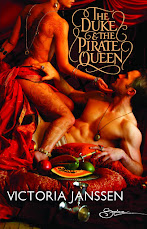
If You Built It...
When Victoria asked me to write about world-building, I was stymied. What world-building? I didn't invent Madison, Wisconsin, after all. It's just this place, you know? I was particularly baffled because in my other life as a science fiction writer when people talk about building a world, they mean literally constructing a planet and populating it, inventing culture, economies, religion, politics, and even sometimes an entire language. From scratch.
Meanwhile, most urban fantasy worlds have characters who speaking English, have recognizable job, and come from real places you can find on any map…
…yet not.
Aye, there's the rub.
The world that the urban fantasy author builds is a very subtle one, and no less complex. It's the kind that takes something familiar and asks you to imagine -–no, believe in -- something lurking just under the surface, something some part of you has always sort of suspected might be there. In my opinion, an urban fantasy works precisely because it’s so very anchored in the real world, only the perspective is a little sideways. You suddenly see the shadows more clearly. What was once nebulous gray solidifies into… a vampire? A werewolf? A genie? A ghost? A fairy?

For me, as a reader, I appreciate the author who can make me look up from their novel that I'm reading and start looking suspiciously at all the other riders on the bus. Is that bearded guy reading the stock pages secretly a werewolf? What about that young mother with the stroller? Does she fight demons in her spare time? Is the bus driver really a troll?
Yes, but how is it done? How do you get readers to buy into your fantasy? I don’t really know for sure, because not everything works the same for every reader. However, I can tell you some of the elements that I use and that I've read that seem to me to be successful.

* Don't stray far from the… truth. There are a lot of things out there already that have a lot of what the corporate world calls "buy in." You might not really believe it works, but most people know that leaving milk out attracts fairies, brownies in particular. If you write a story that builds on an idea that already has a lot of mythical power to it, your world automatically feels more "real."
* Remember that the truth is often complicated. You might remember hearing that milk attracts housecleaning fairies, but did you know that brownies have a darker side? It’s been written about in several classic Irish folktales, and, while you don’t have to only use what’s "provable" via earlier legends, when you do there's a kind of "Oh, yeah! That makes sense" that can happen for readers. Even if they're not familiar with the same source material as you, readers have a good sense of what rings true. Plus, as a bonus, after they read your novel and check out brownies on wikipedia they might be pleasantly shocked to see how "like real life" your depictions were. I used this with Mátyás, my dhampyr. I came across an entry on dhampyrs in one of those Vampire Encyclopedias and I thought: Oh, I totally have to use that!
* Truth is always full of the sublime, the ridiculous, and the down-right hilarious. One device I use a lot to make my vampires seem real is to point out the joke. Because life is silly, and when you highlight what’s humorous about a vampire who has to live in a coffin in someone’s storage locker, it seems perversely more true. Humor, when used right, kind of breaks through what actors call the "fifth wall" between player and audience and the experience can resonate as more personal and realistic.

* The devil is in the details. The more you ask yourself what would it really be like to be a [fill in supernatural creature of choice] the more your world begins to flesh out. And thinking beyond the obvious helps too. Sure, vampires are suited for night shift jobs, but which ones? How about a job, like coal mining, that goes from dawn to dusk and effectively takes the vampire out of the sun all day? And then you have to ask, how can I make *that* interesting?
And maybe you can't. The important thing is to consider every possibility, go down every road, and explore the viability of all ideas.... You might not end up using them all, but the more you’ve worked out the questions, the deeper and more rich your world becomes.
Good luck and happy building!
Tate Hallaway is the author of the Garnet Lacey vamire romance series that started with TALL, DARK & DEAD. Her current release is DEAD IF I DO (May 2009). She lives an alternate life as an award-winning science fiction novelist.




One of my favorite devilish details comes from Tate's Dead Sexy, where she asked "What happened to New Orleans' voodoo queens after Hurricane Katrina?
ReplyDeleteBrilliant!
Hey, thanks, Frank. Don't forget that piece of pottery made by a certain potter in Oregon.... :-)
ReplyDelete